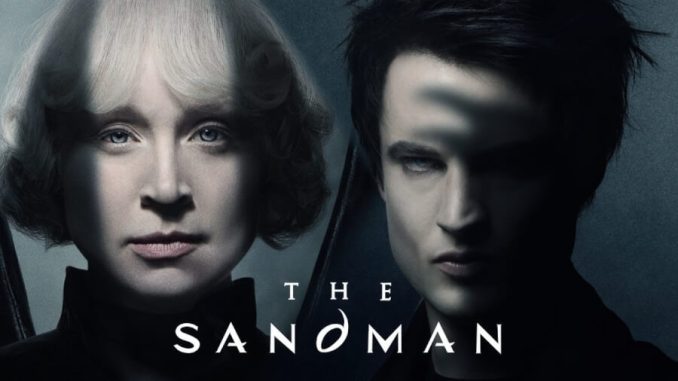
At one point in The Sandman, a 400-year-old Englishman (Ferdinand Kingsley) casually eviscerates a recent production of King Lear. “The idiots had given it a happy ending,” he scoffs. His conversation partner, Dream (Tom Sturridge) — as in, the physical manifestation of the concept of dreaming, and ruler of the impossible realm we travel to when we drift off to sleep — is less bothered. “That will not last,” he predicts sagely. “The great stories will always return to their original forms.”
The Sandman will require no such dramatic reversion to form. Executive produced by the comics’ creator, Neil Gaiman (alongside Allan Heinberg and David S. Goyer), the fantasy drama is nothing if not respectful of its source material. What the exchange about King Lear misses, however, is the way updated versions of great stories can be what keep them feeling fresh and relevant in the first place. By prioritizing fidelity over creativity, The Sandman makes for a decent echo of the comics — but it stops well short of becoming a classic in its own right.
‘The Sandman’ trailer
The Bottom Line
A perfectly fine adaptation that prioritizes fidelity over creativity.
As in the books, Netflix’s The Sandman begins with a capture. Although Dream — like the rest of his Endless siblings, including Death (Kirby Howell-Baptiste), Desire (Mason Alexander Park) and Despair (Donna Preston) — is possessed of powers gods can barely fathom, it is a human magician, Roderick Burgess (Charles Dance), who finally casts a spell strong enough to keep Dream imprisoned among the living for over a century. (If you’re trying to puzzle out what lore explains Dream’s strengths and weaknesses, or why some magic works on him better than others, don’t bother; this is the sort of fantasy series that hand-waves even imminent threats to reality by describing them as “incomprehensible.”)
Dreams and nightmares walk among us. #TheSandman has come to Netflix. pic.twitter.com/7OSWQ6B5nM
— The Sandman (@Netflix_Sandman) August 5, 2022
When Dream finally breaks free in 2022, he rushes back to his kingdom to discover it’s fallen into ruin in his absence, despite the best efforts of his second-in-command Lucienne (an appealingly sharp Vivienne Acheampong), and that several of his subjects have gone rogue. The first season, which adapts the first two of the ten trade paperbacks collecting the original run published from 1989 through 1996, follows Dream as he works to regain his powers, to reassert his authority, to rebuild his world — and maybe, along the way, to gain a deeper understanding of the human lives he purports to serve.
Unquestionably, one of the biggest challenges of any adaptation of The Sandman was bound to be Dream himself. As depicted in the comics, he has the basic shape of an adult man but the bearing of an ethereal alien, with bone-china skin and glittering stars for eyes. It’s a tall order for any flesh-and-blood mortal to fill, and Sturridge does his game best by imbuing Dream with a graceful, deliberate physicality and a low, quiet rumble of a voice. Still, he can’t help but feel human, especially in makeup that does too little to distinguish him from any other 30something goth dude trudging through modern-day London — which in turn undermines some of the isolation he experiences when he’s among people.
Dream dangerously. Enter the world of THE SANDMAN on August 5, only on Netflix. pic.twitter.com/DQOrcsZUM0
— The Sandman (@Netflix_Sandman) July 23, 2022
More vivid is Boyd Holbrook as The Corinthian, an escaped Nightmare beloved by serial killers. The character’s creepiest physical feature is that he has sharp-toothed mouths for eyes, but The Sandman generally keeps them hidden under dark sunglasses; Holbrook is able to exude an oddly seductive menace all on his own. Elsewhere, Jenna Coleman acquits herself so well in her brief appearance as troubled badass Johanna Constantine (a gender-swapped version of the John Constantine from the books, that NBC series and that Keanu Reeves movie) that she might as well be testing the waters for her own spinoff. And Howell-Baptiste might be the series’ single most winning presence as the warm, pragmatic Death.
Having cleared the hurdle of casting characters that loom large in the imagination, where The Sandman stumbles is in finding a purpose beyond its obvious commercial appeal. It’s not nearly as aimless and artless as Cowboy Bebop — another Netflix production based on an acclaimed but seemingly unfilmable property — but it seems to suffer a similar tendency toward faithfulness to a fault, as well as an aversion to trying anything too boldly different. The story begins with Roderick Burgess not because he’s terribly interesting as a character, but seemingly just because that’s where the comics start. It detours to a diner that devolves into chaos not with the expectation that audiences used to Game of Thrones or The Boys will be shocked by its bleak, graphically violent view of mankind, but because it’s a storyline fans expect to see.
The results are mostly not too bad, and sometimes they’re quite good. The single best issue of the ones adapted for season one yields its single best episode, as Dream tags along with Death on her errands and engages in a surprisingly affecting conversation about life, death, love and loneliness in the process. It’s the warmest and funniest hour of a show otherwise defined by a moody inscrutability, and their affectionate sibling dynamic (“You are utterly the stupidest, most self-centered, pathetic excuse for an anthropomorphic personification on this or any other plane,” she scolds him) goes a long way toward fleshing out Dream as a three-dimensional character instead of a two-dimensional cipher.
But it’s difficult not to notice that for a series all about the power of dreams to spark creativity, to inspire our best selves or our worst ones, to change the course of a life or a universe, The Sandman itself feels a bit short on imagination. It’s the curse of so many seminal pieces of art that they start to feel less and less fresh as their influence becomes apparent in more and more other works. An adaptation that settles for delivering a perfectly nice copy of itself instead of a wholesale reimagination can’t help but feel safe and familiar, in ways the original never did.
As much as Dream would like to think nothing’s changed in his time away, he’s confronted over and over with the reality that nothing is the same as it once was — including himself, as loath as he is to admit it. The Sandman, too, might be a little stuck in its ways. It’s an enjoyable enough series, with picturesque CG settings (think Asgard meets Rivendell for Dream’s castle), a likable cast and an occasionally disarming sense of curiosity about the human condition. But it’s too trapped in glass to let itself run truly free into the dream world it wants to conjure.








Leave a Reply